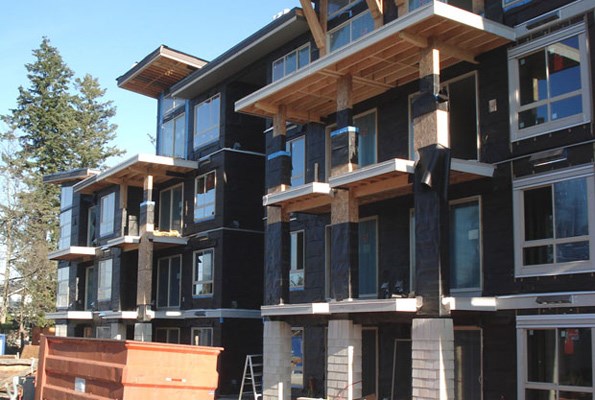Changing neighbourhoods to meet growing housing needs is a difficult thing to accept for many longtime residents in Delta, says Coun. Anne Peterson.
The first-term councillor believes the resistance a group of Ladner homeowners recently put up against a townhouse development that was approved by Delta council certainly won't be the last as properties are accumulated by developers and new applications are submitted for higher density housing.
"It's too simplistic to say this, but sometimes it does come down to this: Either you really re-envision your town cores, wherever you decide they are, and you densify, or you accept the suburban sprawl and go out wherever there's space. Of course, then you're going into the green areas.
"I know it's upsetting for these folks, and I've been getting e-mails and phone calls as well, and I'm trying to find a way to best respond to them. The sprawl came and went and we can't do it anymore. Delta is right at the cusp where we've built out what is buildable, and now we have to rethink how we're dealing with the suburban sprawl we inherited," she said.
Area homeowners fought a proposal by Sycamore Holdings Inc. to build nine townhouses on 54A Street, citing concerns about density, parking, privacy and how the complex would fit in with the existing neighbourhood.
The developer agreed to some design modifications, while councillors pointed out the development is allowable in the current Ladner Area Plan and Official Community Plan.
It was also noted the development would have the same density as a 29-unit townhouse development to the north and less than the maximum allowed.
Noting the location is within a couple of blocks of Ladner Trunk Road where higher density already exists, Peterson said she expects continued pockets of resistance as new housing is introduced.
"The longer people have lived in an area, the less likely they will accept change as routine, desirable or even inevitable. I'm highly sympathetic because it is tough," she said.
"You do buy a nice house on a nice bit of land and you expect this is the way it's going to be from now until you die. Unfortunately, in the Lower Mainland we're severely constrained as to how to deal with all this population that's coming in... by and large, from what I've found in researching how other jurisdictions are dealing with all this population pressure with escalating land costs is smart densification, not just throwing anything up anywhere."
A report by Delta's housing task force last year found most of Delta's housing stock, which is predominately detached singlefamily, was built between 1966 and 1991, when Delta experienced a rapid population increase from 20,664 to 89,434.
During that time, the Agricultural Land Reserve was established, which essentially created an urban containment around the built-out areas. Today, there is little undeveloped land available for new housing.
A number of policy recommendations by the task force were approved in principle, including encouraging subdivisions of large singe-family lots.
Peterson's views echo the task force's report, which noted the greatest challenge would be increasing density in a responsible manner, taking into consideration the impacts it would have on surrounding neighbourhoods.
Peterson said a vision is needed to properly transform the old neighbourhoods, especially ones close to town centres and amenities, to higher density, as well as more affordable housing.
"I've lived in cities with row houses and higher densities. The secret was at the end of the road there was a park, or behind there was green space. You could also walk within minutes to shops and get whatever you want.
"That's what we're lacking here. We still have this post-war anomaly of suburban sprawl and everyone enjoys the space, but now we can't afford it and the infrastructure to support it is outrageous."



